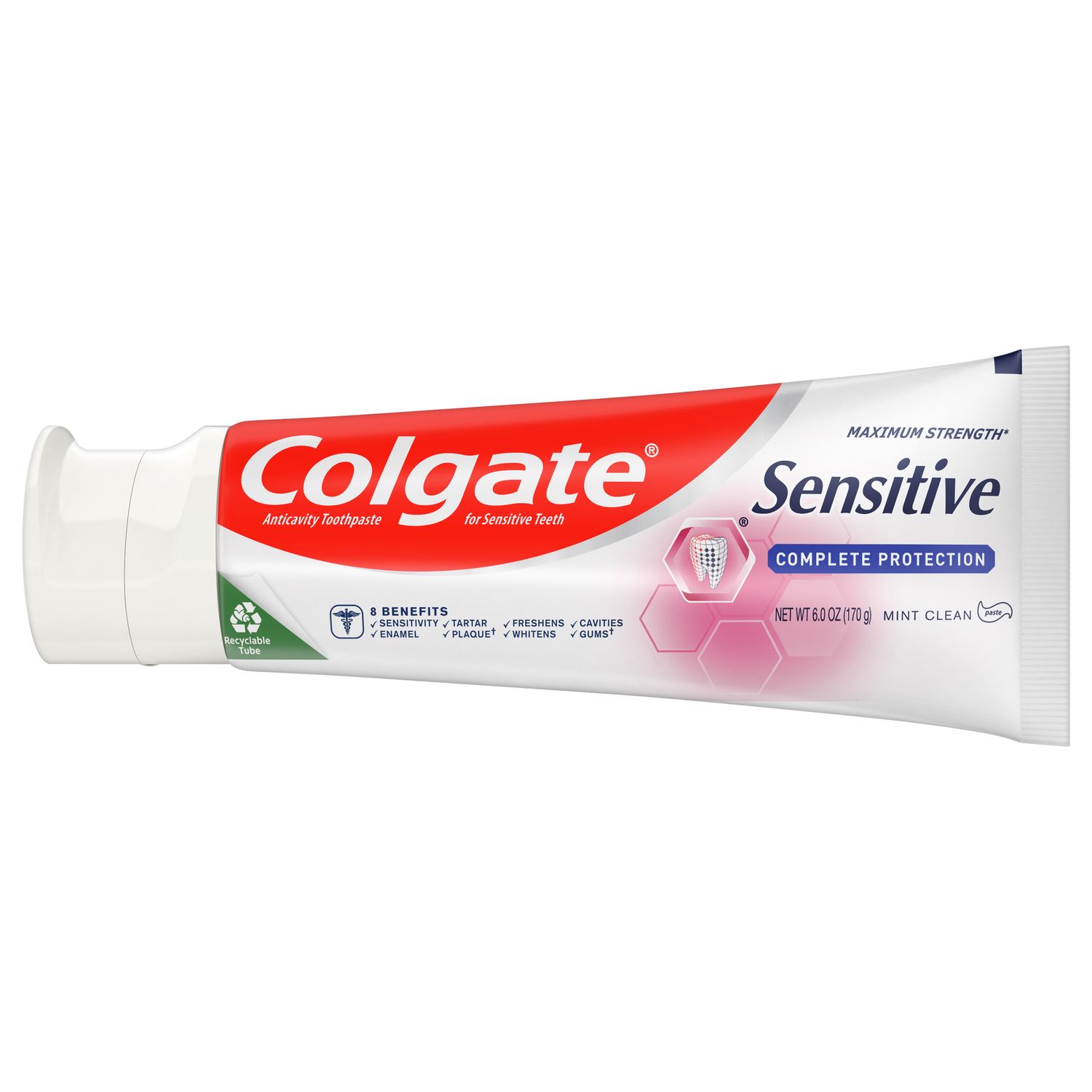
Gingival recession is a strong risk factor for dentin hypersensitivity. In turn, hypersensitivity can cause poor oral hygiene, biofilm accumulation, and further gingival inflammation. What prevention and management strategies can we offer our patients to help them break this vicious cycle?
The connection between dentin hypersensitivity and gingival recession
Dentin hypersensitivity is “pain derived from exposed dentin in response to chemical, thermal, tactile or osmotic stimuli, which cannot be explained as arising from any other dental defect or disease”. While gingival recession does not cause dentin hypersensitivity, the loss of gingival tissue predisposes a patient to hypersensitivity and often occurs alongside it.
Inadequate oral hygiene is a primary cause of gingival recession. Biofilm accumulates at the gingival margin and causes inflammation of the gingiva, eventually leading to the destruction of the periodontal tissues. The gingiva can also be damaged by aggressive toothbrushing.
In a healthy mouth, the gingival tissue covers and protects the cementum on the root of the tooth from acid attacks, erosion and abrasion. Cementum is much thinner and softer than enamel and is therefore less able to withstand these occurrences, so gingival recession can leave it vulnerable to loss, and at a much faster rate than that of enamel. If cementum loss does occur, the dentin beneath will then be exposed.
Exposure of dentin in and of itself will not lead to dentin sensitivity. The dentin tubules that lead to the pulpal chamber are occluded by “plugs” and the dentinal surface is covered with an organic smear layer. This prevents movement of fluid within the tubules, thus preventing the painful stimulation associated with dentin hypersensitivity. However, dentin exposure leaves these plugs and the smear layer vulnerable to removal, at which point the patient may start to experience dentin hypersensitivity.
This condition can cause significant discomfort and make oral hygiene difficult for the patient. Inadequate biofilm control can in turn cause the advancement of periodontal disease and gingival tissue loss, which can then increase the risk or severity of dentin hypersensitivity. So how can dental professionals help patients to break this vicious cycle of mutual reinforcement?
Helping patients break the cycle
In order to reduce the burden of both gingival recession and dentin hypersensitivity, dental professionals must implement prevention and management strategies in five key areas.
1. Routine screening
The prevalence of dentin hypersensitivity is estimated to be as high as up to 85%, but the number of patients actually reporting symptoms to you will no doubt be significantly lower. Despite the negative impact on their wellbeing and quality of life, many patients view dentin hypersensitivity as an unavoidable fact of life, rather than a treatable condition. In many cases, it is only when symptoms become unmanageable that the patient asks for help. For those reasons, it is important that dental professionals proactively incorporate dentin hypersensitivity screening into their routine oral health care. In addition to gingival recession, key risk factors include:
Periodontal disease (active or inactive)
Prior periodontal treatment
An acidic diet
Aggressive or overly frequent toothbrushing
The use of abrasive toothpastes and/or hard toothbrushes
Smoking or chewing tobacco
High alcohol consumption
Xerostomia
Bulimia
Reflux disorders, e.g., GERD.
2. Oral hygiene
The first step is to support patients in optimizing their oral hygiene routine. Reinforce the importance of twice-daily brushing with fluoride toothpaste and daily interdental cleaning, explaining to the patient that this will help to:
Halt gingival tissue loss and recession
Prevent the irreversible loss of periodontal tissue (and possibly teeth)
Preserve the enamel, cementum and dentin
Prevent the worsening of hypersensitivity.
Patients should also wait at least an hour after consuming acidic foods or drinks before toothbrushing to help prevent the loss of temporarily weakened hard tissues.
3. Tools and technique
To protect both the hard and soft tissues, recommend an anti-caries toothpaste for sensitive teeth, like Colgate Sensitive Prevent & Repair. In addition to sodium fluoride to control biofilm, it contains 5% potassium nitrate to depolarize the pulpal nerves and prevent the transmission of pain signals. This toothpaste has been granted the American Dental Association (ADA) Seal of Acceptance, and is within the recommended range for Relative Dentin Abrasivity (RDA).
A hard toothbrush can further traumatize the gingival tissue and contribute to hard tissue loss. Instead, recommend a toothbrush like the Colgate SlimSoft, which has softer, thinner bristles for a deep yet gentle clean. Patients should be advised to brush gently and be shown the correct pressure, as this can be easy for the patient to misjudge.
4. Diet
Dietary acids are a key factor in the onset and progression of dentin hypersensitivity, and they can trigger episodes of dentin hypersensitivity. It is important to discuss dietary choices and risk factors with patients, advising them to limit:
Carbonated drinks, e.g., soda, sports drinks
Alcoholic drinks
Juice
Coffee
Citrus fruits.
They may also benefit from the following tips:
Drink water or milk with or after meals
Rinse the mouth with water after eating
Drink acidic drinks with a straw to minimize tooth contact
Avoid sipping on acidic drinks or snacking on acidic foods throughout the day
Don’t hold or “swish” acidic drinks in the mouth.
5. Medical and behavioral factors
There are a number of medical and behavioral risk factors involved in both dentin hypersensitivity and gingival recession. Successful prevention and management, then, depends on a holistic, multidisciplinary approach. Depending on your patient’s risk and causative factors, you may need to refer them to:
A periodontist for treatment
A physician for treatment of conditions like GERD
Eating disorder specialists for evaluation and treatment
Support services for smoking cessation or alcohol misuse.
Join us
Get resources, products and helpful information to give your patients a healthier future.
Join us
Get resources, products and helpful information to give your patients a healthier future.










